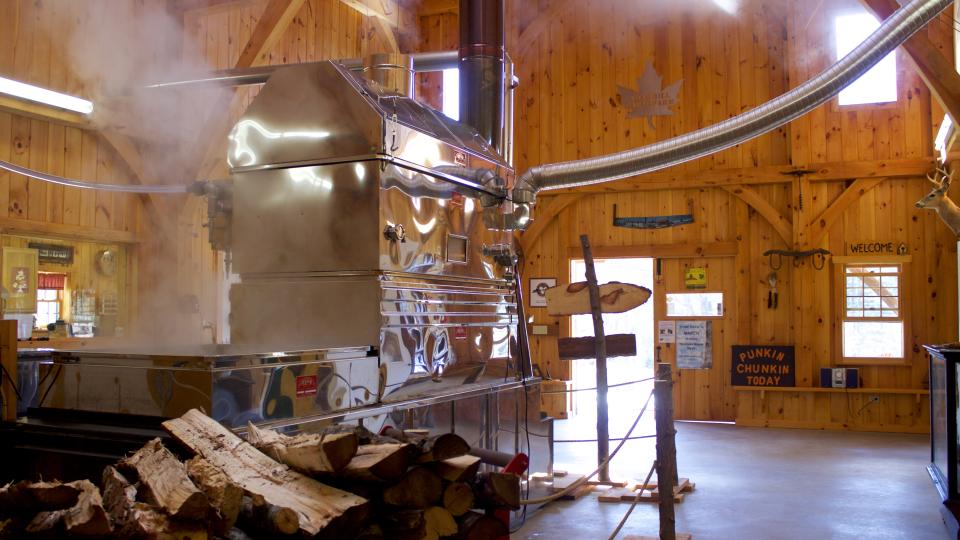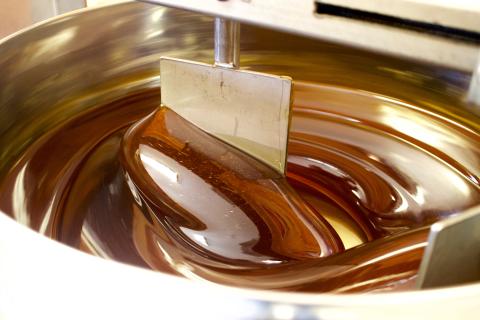How to Make Maple Syrup
By the end of February in the Adirondacks, the daytime temperatures rise above freezing, while the nights dip below 32°. The temperature fluctuations create ideal conditions for sap flow in sugar maple trees.
Among most Adirondack maple producers, the generally accepted practice is to place one tap four-and-a-half feet up from the ground in a tree that is 12 inches or greater in diameter. Trees greater than 18 inches in diameter can accommodate two taps if placed correctly. This ensures that trees will continue to produce maple sugar sustainably for decades.
To collect sap, maple producers rig plastic tubing from tap to tap, allowing sap to flow directly into a storage tank at a nearby sugar shack for processing. It's not uncommon for visitors to the Adirondacks to come across this distinctive blue piping running along cross-country ski trails and roadways. Smaller maple sugar producers may even use buckets to collect the sap.
Once the sap is collected, it is transported to a storage tank, fed into an evaporator and heated up to remove excess moisture. This concentrates the sugars, and once the maple syrup reaches a 66% to 67% sugar concentration, it is moved to a finishing pan. As it cools, the syrup is filtered, graded and bottled.

